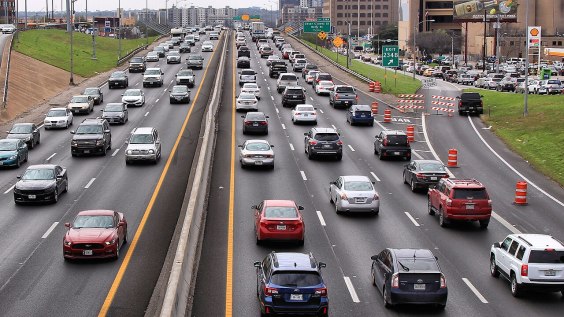How many times have you seen a car ad that shows — nay, glorifies — dangerous driving? Someone revving down a tiny road along a jagged cliff? Or speeding through a city — pedestrians, cars, other impediments somehow miraculously absent?
These ads are ubiquitous in America. But many other countries, including European nations, Canada, Singapore and Australia, ban them to protect public safety. Perhaps its time for the U.S., where traffic deaths are the leading cause of young people, to consider doing the same.
The U.S. auto industry spent $34.5 billion advertising in 2018 — the biggest ad buyer by far in the U.S. And we're constantly being inundated with its messages — and internalizing them. It is a public safety problem, Canadian traffic safety expert Neil Arason in his 2014 book, "No Accident."
"We know with little uncertainty that exposure to many types of risk-glorifying media, including television advertising and video gaming, increases risk-taking driving behaviors," he writes.
Taking some action to limit or eliminate depictions of dangerous driving by auto companies would be a step in the right direction, says Arason. Some other countries guidelines are only voluntary.
But last year, for example, the U.K. banned car ads by Ford, Chrysler and Nissan for promoting dangerous driving. In one ad, for example, Ford had included lines from the Dylan Thomas poem, saying, “Do not go gentle into that good night. Old age should burn and rave at close of day. Rage. Rage against the dying of the light.”
The U.K.'s Advertising Standards Authority said the ad suggested “that driving was a way of releasing anger, which put the driver, other motorists and pedestrians at risk.” And it was banned from the airwaves. Another ad by Chrysler was pulled because it featured four cars racing.
Australia bans car ad with menacing or reckless driving, drunk driving, speeding or off-road driving that would violate the law. But American ads are full of this kind of stuff.
A 2005 study in the Journal of Public Health examined all the car and truck commercials that aired in the U.S. and Canada in January or July between 1998 and 2002. There were a total of 250 ads. Forty-five percent included some kind of dangerous behavior, including aggressive driving (the biggest group at 85 percent), followed by speeding (56 percent). Only 12 percent referenced safety in any way, the study found.
A Dodge ad last year, for example, features cars doing donuts around each other in a parking lot while people stood nearby clapping and cheering.
Consumer Reports conducted a review of car ads last year [PDF]. Performance-related attributes (speed, horsepower) were mentioned three times more than safety or fuel economy/green features, even though fuel economy and safety matters to a majority of car buyers.
But regulating advertisers can help change the dynamic. A 2005 study of Australia's car ads found "performance" and "fun to drive" themes in ads declined following the introduction of regulations.
There's evidence that this has a real impact. In 2010, a number of car ads depicting power, speed and acceleration were tested on child subjects in a research study, which found they did, in fact, promote acceptance of dangerous driving behavior.
Even the hosts of the pro-car radio show, Car Talk, recognized this a long time ago.
"Think about automotive ads on TV," they wrote in 2006. "Nearly all of them show drivers traveling at outrageous speeds, driving recklessly, sometimes with the simple caveat (in small print), 'professional driver on closed track' — or some such horse hockey."





